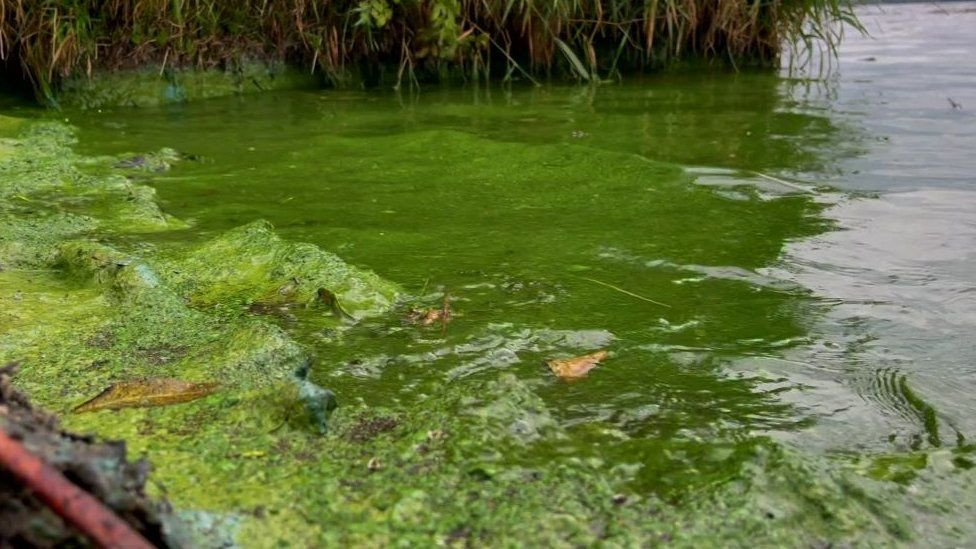Lough Neagh Algae Crisis: A Space-Age Solution
Toxic blue-green algae blooms have plagued Lough Neagh, Northern Ireland, in recent summers, impacting water quality and raising environmental concerns. This has prompted the Department of Agriculture, Environment and Rural Affairs (DAERA) to launch a 37-point action plan. A key element of this plan is a Small Business Research Initiative (SBRI), investing £360,000 (€435,000) in innovative space technology to tackle the problem.
Innovative Solutions from Above
Three companies – Newcastle University, 3DEO, and Plastic-i – have been selected for the first phase of this project, each receiving £120,000 to develop satellite-based solutions. These projects, spearheaded by NI Space in collaboration with the UK Space Agency and DAERA, represent a significant step towards more effective algae monitoring and mitigation.
Newcastle University: Water Quality Dashboard
Newcastle University's project focuses on creating a comprehensive water quality digital twin dashboard. This dashboard will integrate space and time-based data to provide real-time insights into water quality and the overall health of Lough Neagh's aquatic environment. The aim is to provide a more complete picture of the lake's condition, aiding in timely interventions.
3DEO: HABIT (Harmful Algal Bloom Intelligent Twin)
In partnership with the University of Stirling, 3DEO is developing HABIT, a user-friendly interactive visual tool. HABIT will provide detailed information on algal bloom occurrences and their spread across the lake's surface. By offering this real-time monitoring, better management decisions can be made regarding the algae problem.
Plastic-i: Bloomcast NI
Plastic-i, collaborating with MARBLE Aerospace, is creating Bloomcast NI, an AI-powered predictive tool. Bloomcast NI will utilize artificial intelligence to forecast future algal bloom occurrences, enabling proactive measures to mitigate their impact on Lough Neagh. The AI capabilities of Bloomcast NI are intended to provide advanced warnings and aid in the implementation of effective preventative strategies.
The Power of Collaboration
The projects highlight the potential of collaborative partnerships. The involvement of universities like the University of Stirling and companies such as MARBLE Aerospace underscores the importance of combining academic expertise and industry innovation to address environmental challenges. This collaborative effort, further fueled by the significant funding, demonstrates a strong commitment to finding a lasting solution to the Lough Neagh algae issue.
A Multi-Phased Approach
This initiative is structured across three phases. Phase one requires companies to demonstrate the technical feasibility and commercial viability of their proposed solutions, a milestone expected by March 2025. Successful completion of phase one paves the way for phase two, which involves prototype development. Finally, phase three focuses on rigorous testing and optimization of the selected technologies.
Global Implications of Local Innovation
The success of these projects could have far-reaching consequences. As Robert Hill, manager at NI Space, notes, “Space technology offers a plethora of opportunities when it comes to addressing pressing environmental issues.” These innovative solutions, initially focused on Lough Neagh, could have “massive long-term meaningful benefit to the prediction and mitigation of harmful algae, not just in Northern Ireland but across Ireland and globally.” The development of these innovative technologies represents a substantial step towards developing better environmental monitoring methods for use in various water bodies across the world.
Looking Ahead: A Brighter Future for Lough Neagh
The combined efforts of Newcastle University, 3DEO, and Plastic-i, supported by the substantial investment from NI Space, the UK Space Agency, and DAERA, represent a significant advancement in the fight against harmful algal blooms in Lough Neagh. The innovative applications of satellite technology offer a promising path toward improved water quality monitoring and management, with the potential for these techniques to be adapted and applied elsewhere to combat similar challenges. This collaboration signifies a major stride toward a healthier and more sustainable Lough Neagh and contributes to global efforts in environmental protection and preservation. The combined potential of these projects holds immense promise for a cleaner and healthier future for Lough Neagh and beyond.



















